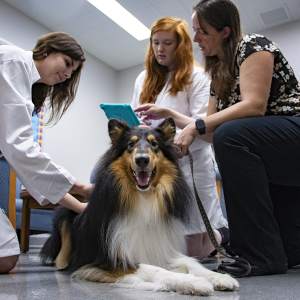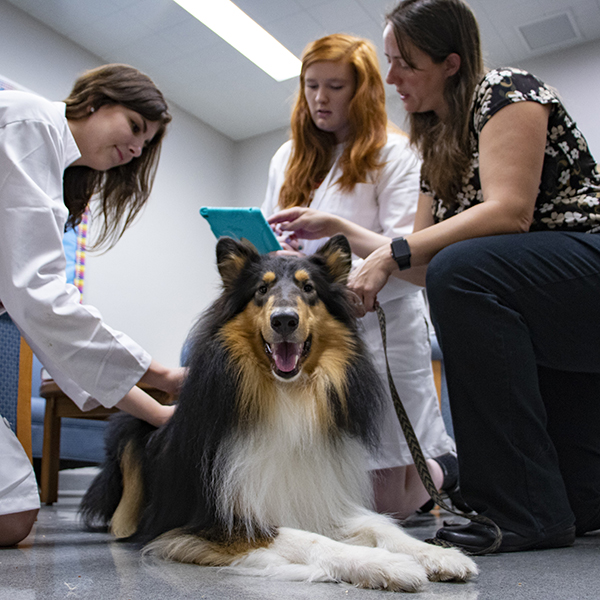Canine empathy research is at the forefront of understanding the complex emotional lives of dogs. This groundbreaking field, exemplified in studies such as those at Harvard on dog behavior, explores how dogs respond to human emotions and situations of distress. Researchers like Erin Hecht and photographer Elias Weiss Friedman investigate the nuances of the dog-human bond, revealing the profound connections that exist between us and our furry companions. Utilizing innovative techniques such as canine brain imaging, these studies delve deep into the emotional and cognitive aspects of dog behavior. By examining how dogs perceive and react to human feelings, this research not only enriches our understanding of canine empathy but also highlights the unique roles dogs play in our lives.
Exploring the emotional intelligence of our canine companions has become an increasingly popular area of study. Research involving the empathic responses of dogs sheds light on their ability to connect with human emotions. This intriguing topic, often highlighted in dog behavior studies, underscores the strong relationship we share with dogs, a bond that transcends mere companionship. Scientists, including notable figures like Elias Weiss Friedman and researchers from Harvard, are using advanced methods to scrutinize the canine psyche, revealing the deep-rooted interactions between dogs and their human counterparts. Understanding how our pets respond to our feelings not only enhances the dog-human relationship but also redefines how we consider animal emotions.
Exploring Canine Empathy Research at Harvard
Canine empathy research is a fascinating field that bridges the gap between scientific inquiry and our everyday interactions with dogs. At Harvard, researchers like Erin Hecht are delving into how dogs respond to human emotions and situations. For instance, a recent experiment involving a Labrador named Sasha demonstrated how some dogs exhibit concern when they perceive a human in distress. This type of empathetic response is key to understanding not just canine behavior, but the deeper emotional bond that exists between dogs and humans. The research also explores variability in these responses, showing that while some dogs react with immediate support, others may demonstrate indifference.
The findings from these empathy studies can greatly enhance our understanding of the dog-human bond. By employing advanced canine brain imaging techniques, researchers are able to visualize the emotions and cognitive capacities associated with empathy in dogs. This approach also provides insights into how different breeds may react differently to the same scenario based on their historical roles and training. As Hecht puts it, examining a dog’s brain while it responds to varying stimuli can reveal layers of emotional complexity that many pet owners may have intuitively sensed but never fully understood.
Insights from Harvard Dog Research and Behavioral Studies
Harvard’s dog research is pioneering a new frontier in understanding dog behavior, linking it directly to cognitive attributes. Studies conducted in Erin Hecht’s lab offer a unique perspective on how canine brains process information, shedding light on behaviors often observed by dog owners. For instance, research has shown that dogs can exhibit signs of fear or aggression in response to various environmental factors, linking these behaviors to their innate cognitive functions. This aligns with the broader understanding of dog behavior studies that emphasize the impact of genetics and early experiences on a dog’s ability to learn and adapt.
Additionally, the work of renowned photographer Elias Weiss Friedman complements these scientific inquiries by emphasizing the expressive nature of dogs. His photographic work on social media captures the candid moments of dogs, revealing their emotions in ways that resonate with dog lovers. By combining visual art with scientific research, both Hecht and Friedman underscore the multi-faceted relationship between humans and their canine companions, illustrating how empathetic behaviors can deepen this bond.
The Interplay Between Dog Behavior and Human Interaction
Understanding the interplay between dog behavior and human interaction is crucial for both pet owners and researchers alike. Dogs are inherently social creatures that thrive within human environments, which makes studying their behavior particularly relevant. For example, as Hecht points out, the ability of a dog to form attachments and exhibit empathy is a trait that has been selectively bred over generations. This characteristic enables dogs to function as not only companions but also as integral members of human families, often acting as emotional support during challenging times.
Moreover, studies show that the experiences dogs encounter in early life significantly shape their behavior. This aspect is vital for developing training programs or rehabilitation strategies for dogs with behavioral issues. By recognizing the factors that contribute to a dog’s propensity for empathy, handlers can create better environments that nurture these traits, ultimately benefiting pet owners and strengthening the human-canine bond.
Canine Brain Imaging: Unlocking the Secrets of Dog Emotion
Canine brain imaging is at the forefront of understanding dog emotion and behavior. Through sophisticated MRI techniques, researchers are uncovering how dogs’ brains react to various stimuli. This groundbreaking approach provides a window into the cognitive processes that underlie the rich emotional lives of dogs. For instance, imaging studies have demonstrated that the size of certain brain regions correlates with specific behaviors, such as aggression or affection, which points to a biological basis for the emotional experiences of our furry friends.
Furthermore, these imaging studies offer insights that align with dog behavior studies—reinforcing how physical expressions and brain activity correspond to emotional states. Understanding these dynamics is pivotal for dog trainers, veterinarians, and pet owners alike, as it allows for more effective communication and deeper relationships with dogs. Ultimately, canine brain imaging not only enhances scientific knowledge but also enriches the day-to-day interactions between dogs and humans.
The Dogist: Capturing the Emotional Essence of Dogs
Elias Weiss Friedman, known for his Instagram account ‘The Dogist’, plays a unique role in illustrating the emotional essence of dogs through his photography. By capturing candid moments often filled with joy or introspection, Friedman presents a visual narrative that resonates with dog lovers worldwide. His work not only highlights the diverse personalities of dogs but also emphasizes their ability to connect emotionally with humans—a core aspect of the dog-human bond that underpins many of the research initiatives at Harvard.
In his upcoming book, ‘This Dog Will Change Your Life’, Friedman aims to delve deeper into the stories behind the images, exploring the connections between dogs and their human counterparts. This storytelling approach enriches the understanding of dog behavior and empathy, showcasing how these relationships can significantly impact our lives. By merging beautiful imagery with poignant narratives, Friedman helps us appreciate the profound ways in which dogs affect our emotional well-being, echoing findings from Harvard’s canine research.
The Emotional Bond: Dogs as Companions and Social Connectors
The emotional bond between dogs and humans has evolved into a unique partnership characterized by companionship and support. Research at Harvard emphasizes that dogs have been selectively bred to thrive in human society, adapting to fulfill roles that resonate with our emotional needs. For many, dogs serve as confidants during difficult times, offering unconditional love and empathy that can significantly improve mental health. The ability of dogs to sense and respond to human emotions transforms the living dynamic, making them invaluable companions.
Moreover, this bond often acts as a catalyst for social interaction among humans. As Friedman notes, dogs serve as ‘furry icebreakers’, facilitating connections between neighbors and creating community bonds that might otherwise never form. The shared responsibility of caring for a dog often leads to deeper relationships among dog owners, further illustrating how deeply dogs embed themselves in human social frameworks. This aspect of the dog-human bond is a critical subject for ongoing research and exploration.
Emotional Intelligence in Dogs: What Owners Should Know
Understanding emotional intelligence in dogs can greatly enrich the relationship between pets and their owners. Research demonstrates that dogs possess a robust ability to read human emotions through body language and facial expressions, resulting in swift, empathetic responses to their owners’ moods. This understanding of canine emotion not only serves to deepen the bond between dogs and their human companions but also informs training practices and behavioral modification, aligning more closely with the dog’s inherent emotional capabilities.
Furthermore, studies on canine empathy reveal stark differences in emotional responses across breeds, suggesting that genetic factors play a significant role in emotional intelligence. As owners gain insights into these dynamics, they can tailor their interactions and training approaches to suit the unique needs of their dogs. This research illustrates the importance of fostering a nurturing environment that acknowledges and celebrates the emotional complexities of dogs, ultimately enhancing the quality of life for both dogs and their families.
Harnessing Canine Behavior for Enhanced Training Techniques
Harnessing the knowledge of canine behavior is essential for developing effective training techniques. With insights gained from canine empathy research and dog behavior studies, trainers can implement methods that resonate with a dog’s emotional understanding. For example, leveraging the natural propensity of dogs to bond and empathize can lead to more engaging and effective training sessions, where recognition of a dog’s emotional state becomes crucial. By creating training environments that respect the emotional landscape of dogs, trainers can foster a cooperative learning process.
Additionally, understanding breed-specific behaviors can optimize training results, aligning teaching methods with the innate tendencies of various breeds. Whether a dog is predisposed to being more protective or more sociable, these insights allow for the tailoring of training strategies that not only teach commands but also strengthen the relationship between the dog and its owner. This harmonious approach to training not only leads to better behavior but also enriches the mutual understanding and respect between dogs and humans.
Final Thoughts on the Dog-Human Relationship and Stemming Research
As research into the dog-human relationship continues to evolve, it underscores the significance of understanding the emotional and behavioral nuances of our canine companions. The work being done at institutions like Harvard highlights the scientific foundation behind age-old beliefs about the empathetic nature of dogs. From dog behavior studies to groundbreaking canine brain imaging, researchers have begun to piece together the intricate tapestry of emotions that define our interactions with these beloved animals.
Ultimately, this ongoing exploration serves dual purposes: to enhance our knowledge about dogs and to deepen the bonds we share with them. As we gain insights into how dogs perceive the world, we empower ourselves to become better owners, trainers, and companions. Embracing the emotional intelligence of dogs not only enriches their lives but also significantly enhances our experiences as dog owners, fostering a deeper appreciation for the companionship they provide.
Frequently Asked Questions
What insights does canine empathy research at Harvard provide about the dog-human bond?
Canine empathy research at Harvard, led by Erin Hecht, explores how dogs respond emotionally to humans, revealing deep insights into the dog-human bond. The studies show that many dogs can sense human emotions and react accordingly, showcasing their empathetic capabilities that strengthen their relationships with people.
How does Harvard’s canine brain imaging contribute to dog behavior studies?
Harvard’s canine brain imaging techniques allow researchers to visualize the brain activity of dogs, shedding light on various aspects of dog behavior. By using MRIs, scientists can understand how different breeds process emotions, learn, and interact with humans, enhancing our knowledge of canine empathy.
Who are the key figures in canine empathy research at Harvard?
Key figures in canine empathy research at Harvard include Erin Hecht, an assistant professor specializing in canine brain studies, and Elias Weiss Friedman, a renowned photographer and founder of ‘The Dogist.’ Together, they combine scientific inquiry and artistic portrayal to deepen our understanding of the dog-human bond.
What role does Elias Weiss Friedman play in canine empathy research?
Elias Weiss Friedman contributes to canine empathy research by documenting dog expressions through photography, offering a visual perspective on their emotional states. His work complements scientific studies by capturing candid moments that reflect the dogs’ empathy and connection with humans.
What can we learn about dogs’ emotional responses through dog behavior studies?
Dog behavior studies often reveal that dogs possess a wide range of emotional responses, including empathy, which can be observed in situations where they react to human distress. These studies indicate that dogs are acutely aware of their human companions’ feelings, further solidifying the emotional bond they share.
How do dogs’ historical roles impact their empathy and behavior according to canine research?
According to canine research, dogs have been selectively bred for various roles, such as companionship or guarding. These historical roles influence their social behaviors and empathy levels, as some breeds are more attuned to human emotions, enabling them to form closer bonds with their owners.
What are the implications of canine empathy research for dog owners and communities?
The implications of canine empathy research for dog owners and communities include a greater understanding of dog behavior, enhanced communication between dogs and humans, and improved training methods. Recognizing dogs’ empathetic capacities can foster stronger relationships and encourage responsible pet ownership.
Can canine empathy research inform our understanding of dogs with behavioral issues?
Yes, canine empathy research can provide valuable insights into the behavioral issues faced by dogs, particularly those stemming from early life stress or trauma. By understanding the emotional responses of these dogs, researchers like Erin Hecht aim to develop interventions that can improve their social behaviors and quality of life.
How does studying dogs’ faces contribute to our understanding of canine empathy?
Studying dogs’ faces helps researchers discern the subtle cues and expressions that indicate their emotional states. Understanding these facial signals is crucial in canine empathy research, as it allows scientists to assess how dogs react to human emotions and situations, ultimately enhancing our knowledge of the dog-human bond.
Why is canine empathy research an essential area of study in animal behavior?
Canine empathy research is vital in animal behavior because it challenges traditional views of human-animal interactions, revealing the complex emotional lives of dogs. It highlights the significant role of empathy in social relationships, not just between dogs and their owners but also within communities and among various species.
| Aspect | Details |
|---|---|
| Purpose of Research | To explore canine empathy and the human-canine bond through behavioral studies and imaging techniques. |
| Key Figures | Erin Hecht (Harvard Canine researcher) and Elias Weiss Friedman (The Dogist photographer). |
| Research Methods | Hecht uses MRIs to study canine brains; Friedman captures dogs’ candid moments through photography. |
| Behavioral Observations | Dogs exhibit various responses to social cues; reactions vary significantly between individuals. |
| Cultural Impact | Dogs as social facilitators; they enhance community interactions and personal connections. |
| Ongoing Studies | Hecht seeks participants with dogs showing behavioral issues for studies on attachment to children ages 7-12. |
| Takeaway | The research enhances understanding of canine empathy and the deep-rooted bonds between dogs and humans. |
Summary
Canine empathy research reveals profound insights into the emotional intelligence of dogs and their ability to connect with humans. Through initiatives led by Erin Hecht at Harvard and conversations with Elias Weiss Friedman, this field showcases how dogs respond to social cues and exhibit genuine empathy. The findings not only highlight the cognitive abilities of dogs but also emphasize their role in fostering community connections. As we explore further into canine behavior and emotional depth, the importance of understanding canine empathy continues to grow.








